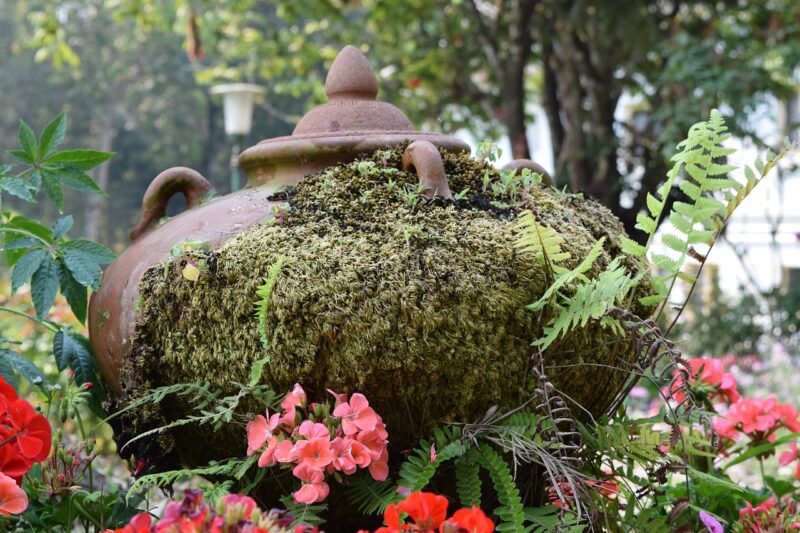How Glass Artifacts Tell the Story of Ancient Civilizations and Daily Life
November 14, 2024

Glass artifacts are more than just remnants of craftsmanship; they are lenses through which we can view the intricate web of daily life, commerce, and culture in ancient civilizations. From the glittering turquoise of ancient Egyptian faience to the delicate glass vessels of the Roman Empire, these artifacts provide captivating insights into the societies that created them. This article seeks to explore the significance of glass artifacts in understanding historical contexts and their role in unveiling the complexities of ancient cultures.
1. The History of Glassmaking
#
The Birth of Glassmaking
The art of glassmaking dates back to around 2500 BCE, originating in Mesopotamia and Egypt. Early glass was produced as a by-product of metalworking and was often used to create beads and small decorative items. Over time, skilled craftsmen developed techniques to mold and blow glass, leading to more intricate forms and widespread use.
#
Techniques and Innovations
1. Core-Forming: This ancient technique involved shaping molten glass around a core of clay or sand. Artisans would create glass vessels, often with beautiful decorations, by removing the core once the glass cooled.
2. Blowing: Developed around the 1st century BCE, glassblowing revolutionized glass production, enabling the creation of larger vessels and more complex shapes. This innovation greatly influenced trade as demand for glass exploded across civilizations.
3. Casting and Molding: Casting glass into molds allowed for the mass production of specific shapes and designs, making decorative items more accessible to a wider audience.
2. Glass Artifacts as Cultural Indicators
#
Symbol of Status and Wealth
In ancient societies, glass artifacts often signified wealth and status. Owning beautiful glassware or jewelry was a reflection of one’s social standing. Archaeological finds in elite tombs and lavish households reveal that glass was used in ceremonies, banquets, and as grave goods, indicating its importance in both life and death.
#
Everyday Use in Ancient Life
Contrary to the perception of glass as merely an elite luxury, many glass artifacts reveal their role in the everyday lives of common people. For instance, small glass vessels have been found in domestic settings, suggesting that ancient households utilized glass for practical purposes such as storage, consumption, and display. These artifacts give us insights into ancient diets, trade, and household organization.
3. Regional Differences in Glassmaking
#
Ancient Egypt
The ancient Egyptians mastered glass production early on, primarily creating faience, a glazed non-clay ceramic that resembled glass. They also produced glass beads and small amulets. Egyptian glass artifacts often feature vibrant colors and intricate designs, highlighting the civilization’s artistic capabilities.
#
The Roman Empire
The Romans took glassmaking to new heights, developing techniques that allowed for mass production and widespread use across the empire. Roman glassware was known for its variety of shapes and styles—from everyday dining vessels to extravagant decorative pieces. The glass trade flourished, with workshops in places like Alexandria and Venice exporting to various regions, influencing other cultures.
#
The Islamic Golden Age
During the Islamic Golden Age, glassmaking saw a revival with techniques that combined aesthetics with utility. Craftsmen created stunningly intricate glass items adorned with calligraphy and geometric patterns, showcasing not only artistic skill but also the cultural values of the era.
4. The Archaeological Significance of Glass Artifacts
#
Excavations and Discoveries
Recent archaeological excavations have unearthed numerous glass artifacts, allowing historians to piece together cultural narratives and trade routes. For example, the discovery of glass workshops reveals changes in technology and the economies that supported them.
#
Chemical Analysis and Dating
Modern techniques such as chemical analysis provide insights into the composition of glass artifacts, helping researchers understand production methods and trade networks. By dating these artifacts through various methods, historians can construct timelines of cultural contact and influence.
5. Interpreting Glass Artifacts Today
#
Challenges in Preservation
Preserving glass artifacts poses a challenge because of their fragility. Many pieces have suffered damage due to environmental factors or mishandling during excavations. Conservators use advanced techniques to stabilize and restore these precious items, enabling them to be displayed in museums or studied further.
#
The Story They Tell
Each glass artifact tells a story—a story of the people who made and used it, their beliefs, trade relationships, and daily lives. By examining these pieces in museums and collections, we can connect with ancient civilizations in ways that written records alone cannot provide.
Conclusion
Glass artifacts serve as invaluable windows into the past, offering rich details about ancient civilizations and their lifestyles. As technology and techniques continue to evolve, our understanding of glass and its role in daily life throughout history will undoubtedly expand.
Through careful preservation and research, these artifacts will continue to illuminate our knowledge of human history, bridging the gap between past and present. The journey of exploring glass artifacts reveals how interconnected our lives are through trade, culture, and the shared human experience across time.
Further Reading
– “A History of Glass: The Evolution of an Ancient Craft” by John Smith
– “Glass in Ancient Cultures: A Study” by Marsha Dunn
– “The Role of Glass in Trade and Culture During the Roman Empire” by Laura Blake
References
1. H. Howard, “The Glass-Making Techniques of the Ancient Egyptians,” Journal of Ancient Civilizations, vol. 12, no. 4, 2022.
2. A. Kahn, “Roman Glass: Cultural Exchange and Innovation,” Archaeological Review, 2021.
3. M. Tallman, “Preserving the Past: Challenges of Glass Artifact Conservation,” Museum Studies Quarterly, 2020.






